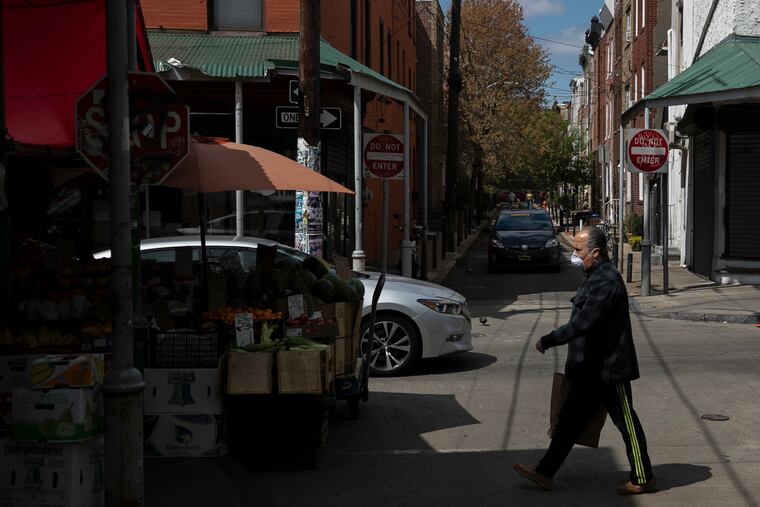How to know when the coronavirus recession is ending (and don’t hold your breath)
"The speed of the downturn has made most traditional measures of economic activity out of date by the time they are published,” one analyst laments. Here's what you need to know.

How bad is it?
"The speed of the downturn has made most traditional measures of economic activity” — the familiar jobs, production, and spending numbers — "out of date by the time they are published,” laments Frederick Cannon, head of research and chief equity strategist at New York investment bank Keefe Bruyette & Woods.
Cannon says he and his peers are instead tracking new measures that suggest where economic activity is headed and how fast, “the most obvious” being the growth in confirmed coronavirus cases as aggregated by Johns Hopkins University.
More than half a million Americans had tested positive for the virus as of Monday. And many more are expected to contract it, with thousands dying, even as “the rate of new cases is beginning to decline,” Cannon notes.
So investors were extra-sensitive last week to hopeful comments by the CDC’s infectious-disease chief, Anthony Fauci, that the Trump administration is reviewing plans to let business reopen. Such comments have raised investor hopes that workers might be called back sooner than the tentative “early June” target, which partly explains the stock market’s partial recovery in recent days, Cannon told clients Monday.
U.S. unemployment rate updates aren’t due to be published until May 8. But Google search trend data show the phrases “unemployment insurance” and “unemployment benefits” jumped 20-fold in the two weeks from March 12 to 26.
Those millions of searches, plus state unemployment filings — which hit a peak of almost seven million the week of March 20 and nearly as many last week — along with data from past recessions helped KBW estimate that 16% of American workers, or one in six, were out of a job by the end of March. The data also showed that the layoff trend has peaked and fewer jobs are now being cut.
Three other indicators show “the severity of the downturn in real time.” These are restaurant reservation bookings (which have collapsed toward zero, according to such services as Open Table), hotel reservations — STR.com, the former Smith Travel Research, says hotels were 60% full in February, but just 20% full in early April — and airline reservations, which have nose-dived toward zero on many routes.
But it is restaurant reservations that should also project the inevitable turnaround — the “green shoots” from recovering employers and workers, “the first signal that the consumer is getting back on track,” with airline and hotel chain reservations providing a later, firmer sign of recovery.
Cannon is especially worried about factories. Manufacturing, which accounts for about 20% of the U.S. economy, tends to recover slowly. When a factory shuts long enough, customers tend to look for substitutes elsewhere, or cut back on their purchasing, and can’t be counted on to resume buying soon.
Weekly steel production, as measured by the American Iron and Steel Institute, has slowed. It was down by 4% in the third week of March, 13% the next week, and 19% the week ended April 4 — representing an “extreme” decline that “will be a critical measure to watch in coming weeks.”
The bond-yield spread — the gap between secure U.S. Treasury debt and risky corporate junk bonds — measures investors’ fears that many companies won’t pay their debts. The higher the spread, the more angst. That measure rose from 3% to 4% in early March and then hit 11% in early April, before the Federal Reserve narrowed the spread with a plan to buy junk bonds from investor exchange-traded funds.
That’s a real Wall Street bailout move, two weeks after the $2.2. trillion coronavirus economic relief bill, whose backers proclaimed loudly that it mostly favored workers and employers, hospitals, and states and city governments (plus some tax breaks for real estate investors).
Some bank metrics may be misleading. “Commercial and industrial” loans by banks, usually a sign of economic growth, were up a robust 21% from last year in the week ending April 1, R. Scott Siefers, an analyst at Piper Sandler & Co. in New York, notes in a report to clients.
But Siefers adds that much of the growth can be accounted for by companies hurrying to grab the maximum cash from their bank lines of credit before they are cut off in the event of a recession.
Similarly, bank deposits jumped 13%, compared with the same week last year. But that, too, looks partly like a desperation move, with companies and individuals liquidating stock as the market fell — or even tapping their credit lines and moving the borrowed money into deposit accounts. They did this even though that means paying more interest to borrow than they can hope to receive as deposit interest.
Besides the stimulus the government enacted at the end of March, a new Federal Reserve program announced late last week would give easy-money loans to mid-sized employers (with more than 500 workers) who don’t qualify for the Paycheck Protection Program’s “forgivable” loans or larger corporate lending.
And, in addition to buying junk bonds from investment funds as noted above, the Fed agreed to buy collateralized mortgage obligations from big investors — protecting them, for example, from a drop in office values if employers and retailers don’t rush back to office buildings and let more leases expire in the next few months.